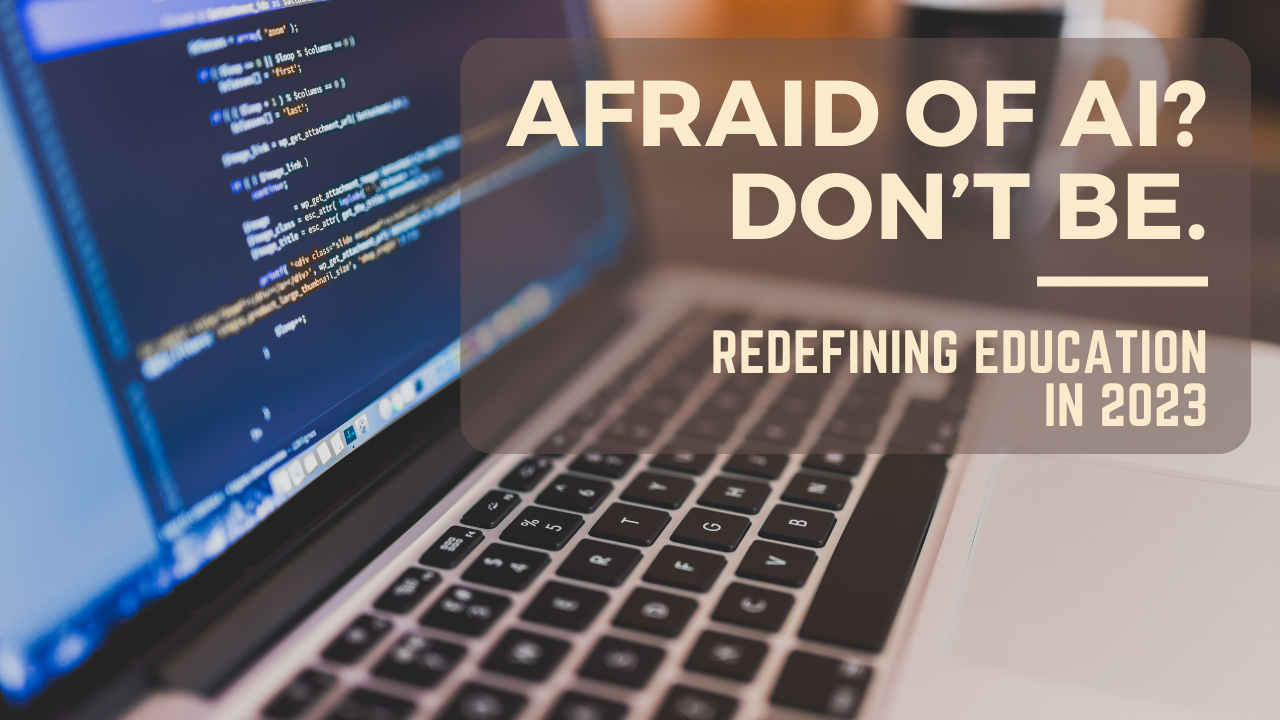Blogs

Afraid of AI? Don't Be.
By Hannah Jackson
Redefining Education in 2023
Twenty years ago I would have guessed that by now I’d have a robot assistant making my breakfast. It would fold the laundry, dress the kids, and drive us all to work and school.
Of course, that hypothesis would prove to be wrong. I made my own breakfast today. I did ask a robot to write me a sonnet from the point of view of a lampshade that fell in love with a lightbulb, though. It sounded pretty good.
For some, living through a massive culture shift is fear-provoking. As we reach the intersection of poor student mental health levels, rapidly evolving technology, and demands of a changing workforce, we observe that the students undergoing more stress are more likely to cheat with or misuse AI technology.
Perhaps, twenty years ago when I made those robotics predictions, the purpose of education was to shape and nourish the student’s mind into all it was capable of becoming separately from the computer and the internet. Sure, we used technology in teaching and encouraged students to enrich their learning with its resources, but the 18-year-old student had some degree of detachment from technology every time they stepped away from the computer or phone.
The student has changed, and education must evolve with them. The 2023 students coming to university directly after high school were born in 2005. What happened in 2005? All major media companies began podcasting. Phones could stream TV shows. In 2006, their toddler pictures were posted to Facebook. When they started kindergarten, the smartphone was commonplace, targeted ads were giving hyper-personalized recommendations, AI image recognition was in full force, and deepfakes were spreading political misinformation across social media platforms. The student is not separate from technology, because the world into which they were born is woven together with it.
On Yik Yak and TikTok, students are sharing their best use cases for ChatGPT with one another. They are using it for class as a tool, ethically or not.
So, how do we adapt?
- Unveil the tool. The first step is demystifying it. Make an account on Open AI and become familiar with ChatGPT: the way it sounds, its deficiencies, its intonation and cadence. It may sound different as time goes on, but this is a good place to start.
- Equip yourself with research. This year’s academic research on ChatGPT is booming. For your needs at UD specifically, we have many sessions on research-based best practices. For live and recorded professional development, visit the Learn Platform. This comprehensive guide from the Center for Online Learning provides information on Adjusting Teaching to ChatGPT and AI Generative Software.
- Talk with your students. Whether you are ready to use ChatGPT in your curriculum yet or not, students are using it and talking about it with peers. Start an open conversation with your students, and come prepared with your own knowledge of ChatGPT’s capabilities and weaknesses. After all, the AI we have today is less efficient, less human, less omniscient than the AI we will have tomorrow. Today, build your classroom community around an air of openness.
- Walk into the moral gray area together and with tools to navigate. This recent study of middle school students discussed the efficacy of learning activities that help students identify deepfakes and misinformation in media. It brings up an important question: how are we preparing students with the robust digital literacy skills they need to succeed in this world?
The Gen Z student population brings a plume of innovation with them as they enter university and the workforce. They have grown up in a climate synonymous with constant access to information and a household presence of AI. Redefining education to meet the needs of our students today is the way we adequately prepare them for what is to come.
If you’re struggling with where to begin, start by getting comfortable with ChatGPT. The students already are.
